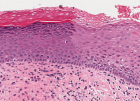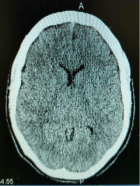Abstract
Research Article
Biodegradation of gold and platinum implants in rats studied by electron microscopy
Ludwig Jonas*, Hendrik Kosslick, Hermann Sauer, Tino Just, Ursula Vick and Gerhard Fulda
Published: 27 November, 2019 | Volume 2 - Issue 1 | Pages: 041-048
Graphical abstract
Biodegradation of implanted gold in human tissue. TEM images reveal markedly biodegradation of implanted gold and re-crystallization of dissolved gold as nanoparticle of different size, shape and crystallinity. Highly crystalline icosahedral Au nanoparticle and the corresponding power spectrum are shown on top.
Background: Despite the importance of biodegradation for the durability of metal prosthesis and the widely use of gold implants, there exist a lack of knowledge regarding the stability of pure gold in tissue.
Methods: We studied biodegradation of grids of pure gold, nickel, and copper as well as middle ear prosthesis of gold, platinum or titanium. Metals were implanted into rat skin and humans. Dissolution and re-crystallization process of the metals was analysed using SEM, TEM, power spectra as well as elemental analysis by EDX and EELS/ESI.
Results: Biodegradation of gold was detected, presumably by solving and re-precipitation of gold around implants. Gold cluster, nanoparticles, and mesostructures were detected, formed by dissolution and re-crystallization process. This process results into a migration of gold into the farer off tissue. Cellular filaments as biomolecular templates facilitate the formation of mesostructures. Loss of function of middle ear prosthesis by biodegradation is caused by chronic inflammation and fibrosis. Indeed, similar processes were detected with platinum, but in a very lower level.
Conclusion: Noble metal implants undergo biodegradation in oxidative environment in tissue. The dissolution – recrystallization process can be explained by enzyme catalysed redox processes comprising reactive oxygen species and reduction agents as ascorbic acid present in cells and body tissue. Enymes like myeloperoxidase inside lysosomes of inflammatory cells produce hypochloride ions and H2O2 which can dissolve the gold.
General significance: The crucial role of the specific chemical environments of gold implants in tissue for their chemical stability and durability of function has been demonstrated. Due to widely use and importance of gold implants, this finding is of general interes.
Read Full Article HTML DOI: 10.29328/journal.ijpra.1001014 Cite this Article Read Full Article PDF
Keywords:
Gold; Platinum; Biodegradation; Implants; Au nanoparticle; Recrystallization; Self-assembly
References
- Jonas L, Fulda G, Nizze H, Zimmermann R, Gross G, et al. Detection of gold particles in the neck skin after lightning stroke with evaporation of an ornamental chain. Ultrastr Pathol. 2002; 26: 153-159. PubMed: https://www.ncbi.nlm.nih.gov/pubmed/12184373
- Laing PG, Ferguson AB, Hodge ES. Tissue reaction in rabbit muscule exposed to metallic implants. J Biomed Mater Res. 1967; 1: 135-149. PubMed: https://www.ncbi.nlm.nih.gov/pubmed/5605609
- Lalor PA, Revell PA, Gray AB, Wright S, Railton GT, et al. Sensitivity to titanium. A cause of implant failure? J Bone Joint Surg. 1991; 73: 25-28. PubMed: https://www.ncbi.nlm.nih.gov/pubmed/1991768
- Meachim G, Williams DF. Changes in nonosseous tissue adjacent to titanium implants. J Biomed Mater Res. 1973; 7: 555-572. PubMed: https://www.ncbi.nlm.nih.gov/pubmed/4589049
- Moberg LE, Nordenram A, Kjellman O. Metal release from plates used in jaw fracture treatment. A pilot study. Int J Oral Maxiofac Surg. 1989; 18: 311-314. PubMed: https://www.ncbi.nlm.nih.gov/pubmed/2509588
- Rosenberg K, Gratz W, Sailer HF. Should titanium miniplates be removed after bone healing is complete? Int J Oral Maxiofac Surg. 1993; 22: 185-188. PubMed: https://www.ncbi.nlm.nih.gov/pubmed/8340633
- Schliephake H, Reiss G, Urban R, Neukam FW, Guckel S. Metal release from titanium fixtures during placement in the mandible. An experimental study. Int J Oral Maxiofac Implants. 1993; 8: 502-511. PubMed: https://www.ncbi.nlm.nih.gov/pubmed/8112789
- Schliephake H, Lehmann H, Kunz U, Schmelzeisen R. Ultrastructural findings in soft tissue adjacent to titanium plates used in jaw fracture treatment. Int J Oral Maxiofac Surg. 1993; 22: 20-25. PubMed: https://www.ncbi.nlm.nih.gov/pubmed/8459118
- J Black. Does corrosion matter? J Bone Joint Surg. 1988; 708: 517-520. PubMed: https://www.ncbi.nlm.nih.gov/pubmed/3403590
- Besssho K, Fujimura K, Iizuka T. Experimental long-term study of titanium ions eluted from pure titanium miniplates. J Biomed Mater Res. 1995; 31: 901-904. PubMed: https://www.ncbi.nlm.nih.gov/pubmed/7593030
- Lesniewicz, Gackiewcz L, Zyrnicki W. Biodegradation of metallic surgical implants investigated using an ultrasound-assisted process combined with ICP-OES and XRD. Int Biodeter Biodegr. 2010; 64: 81-85.
- Jorgenson DS, Centeno JA, Mayer MH, Topperm MJ, Nossov PC, et al. Biologic response to passive dissolution of titanium craniofacial microplates. Biomaterials. 1999; 20: 675-682. PubMed: https://www.ncbi.nlm.nih.gov/pubmed/10208410
- Jonas L, Fulda G, Radeck C, Henkel KO, Holzhüter G, et al. Biodegradation of titanium implants after long-time insertion used fort he treatment of fractured upper and lower jaws through osteosynthesis, Elemental analysis by electron microscopy and EDX or EELS. Ultrastr Pathol. 2001; 25: 375-383.
- Wang JC, Yu WD, Sandhu HS, Betts F, Bhuta S, et al. Metal debris from titanium spinal implants. Spine. 1999; 24: 899-903. PubMed: https://www.ncbi.nlm.nih.gov/pubmed/10327512
- Kaufmann T, Bloch C, Schmidt W, Jonas L. Chronic inflammation and pain inside the mandibular jaw and a 10-year forgotten amalgam filling in an alveolar cavity of an extracted molar tooth. Ultrastr Pathol. 2005; 29: 405-413. PubMed: https://www.ncbi.nlm.nih.gov/pubmed/16257867
- Jonas L, Bloch C, Zimmermann R, Stadie V, Gross GE, et al. Detection of silver sulfide deposits in the skin of patients with argyria after long-term use of silver-containing drugs. Ultrastr Pathol. 2007; 31: 379-384. PubMed: https://www.ncbi.nlm.nih.gov/pubmed/18098055
- Danscher G. In vivo liberation of gold ions from gold implants. Autometallographic tracing of gold in cells adjacent to metallic gold. Histochem. Cell Biol. 2002; 117: 447-452. PubMed: https://www.ncbi.nlm.nih.gov/pubmed/12029492
- Bond GC, Louis C, Thompson DT. Catalysis by Gold.
- Hutchings GJ. Imperial College Press, Catalytic Science Series, London. 2006.
- Nolan P. Organic Chemistry: Catalytic gold rush. Nature. 2007; 445: 496-497. PubMed: https://www.ncbi.nlm.nih.gov/pubmed/17268459
- Addison CC, Brownlee GS, Logan N. Tetranitratoaurates(III): preparation, spectra, and properties. J Chem Soc. 1972; 14: 1440-1445.
- Büchner O, Wickleder MS. (NO2) {Au(NO3)4]: Synthese, Struktur und thermischer. Anorg Allg Chem. 2004; 630: 1714.
- Kozin LF, Prokopenko VA, Bogdanova AK. Kinetics and Mechanism of the gold corrosion dissolution in hypochlorite solution. Protection of Metals. 2005; 41: 22-29.
- Gusmano G, Montanari R, Kaciulis S, Montesperelli G, Denk R. Gold corrosion: red strains on a gold austrian ducat. Appl Phys A. 2004; 79: 205–211.
- Mineev GG, Panchenko AF. Rastvoriteli zolota i serebra v gidrometallurgii(Solvents for Gold and Silver in Hydrometallurgy), Moscow. Metallurgy. 1994.
- Cao Zh, Zhong-Liang X, Gu N, Fu-Chun G, Dao-Wu Y, et al. Corrosion behaviors on polycrystalline gold substrates in self-assembled processes of alkanethiol monolayers. Anal Lett. 2005; 38: 1289-1304.
- Turkevich J, Stevenson PC, Hillier J. A study of the nucleation and growth processes in the synthesis of colloidal gold. Discuss Faraday Soc. 1951; 11: 55-75.
- Lu W, Wang W, Su Y, Li J, Jiang L. Formation of polydiacetylene–NH2–gold hollow spheres and their ability in DNA immobilization. Nanotechnology. 2005; 16: 2582-2586.
- Zhang X, Li D. Metal-compound induced vesicles as efficient directors for rapid synthesis of hollow alloy spheres. Angew Chem Int Ed. 2006; 45: 5971-5974. PubMed: https://www.ncbi.nlm.nih.gov/pubmed/16897809
- Meldrum FC, Colfen H. Controlling mineral morphologies and structures in biological and synthetic systems. Chem Rev. 2008; 108: 4332-4432. PubMed: https://www.ncbi.nlm.nih.gov/pubmed/19006397
- Brutchey RL, Morse DE. Silicatein and the translation of its molecular mechanism of biosilification into low temperature nanomaterial synthesis. Chem Rev. 2008; 108: 4915-4934. PubMed: https://www.ncbi.nlm.nih.gov/pubmed/18771329
- Stannard C, Martin P, Pauliac-Vaujour E, Moriarty P, Vancea I, et al. Controlling Pattern Formation in Nanoparticle Assemblies via Directed Solvent Dewetting. J Phys Chem C. 2008; 112: 15195-15203. PubMed: https://www.ncbi.nlm.nih.gov/pubmed/17930453
- Wang T, Xu AW, Colfen H. Formation of Self-Organized Dynamic Structure Patterns of Barium Carbonate Crystals in Polymer-Controlled Crystallization. Angew Chem Int Ed. 2006; 45: 4451-4455. PubMed: https://www.ncbi.nlm.nih.gov/pubmed/16789037
- Cölfen H, Antonietti M. Mesokristalle: anorganische Überstrukturen durch hochparallele Kristallisation und kontrollierte Ausrichtung. Angew Chem. 2005; 117: 5714-5730.
- Vick U, Just T, Pau HW. Fulda G, Laabs W, Jonas L. Experimentelle Biodegradation von Titanimplantaten in der Mittelohrchrirurgie.
- Vick U, Just T, Ostwald J, Pau HW, Jonas L. Experimentelle und klinische Untersuchungen zur Biodegradation von Mittelohrimplantaten und ihr Einfluß auf das Langzeithörvermögen.
Figures:

Figure 1
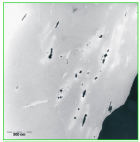
Figure 2
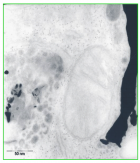
Figure 3
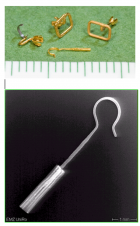
Figure 4

Figure 5

Figure 6

Figure 7
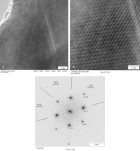
Figure 8

Figure 9

Figure 10
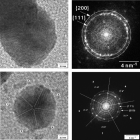
Figure 11
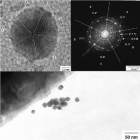
Figure 12
Similar Articles
-
Biodegradation of gold and platinum implants in rats studied by electron microscopyLudwig Jonas*,Hendrik Kosslick,Hermann Sauer,Tino Just,Ursula Vick,Gerhard Fulda. Biodegradation of gold and platinum implants in rats studied by electron microscopy. . 2019 doi: 10.29328/journal.ijpra.1001014; 2: 041-048
-
Room temperature organic superconductor compound prediction based on fractals in mesoscopic-scale regimeWidastra Hidajatullah-Maksoed*. Room temperature organic superconductor compound prediction based on fractals in mesoscopic-scale regime. . 2023 doi: 10.29328/journal.ijpra.1001056; 6: 095-097
-
Additional Gold Recovery from Tailing Waste By Ion Exchange ResinsAshrapov UT*, Malikov Sh R, Erdanov MN, Mirzaev BB. Additional Gold Recovery from Tailing Waste By Ion Exchange Resins. . 2024 doi: 10.29328/journal.ijpra.1001098; 7: 132-138
Recently Viewed
-
Sensitivity and Intertextile variance of amylase paper for saliva detectionAlexander Lotozynski*. Sensitivity and Intertextile variance of amylase paper for saliva detection. J Forensic Sci Res. 2020: doi: 10.29328/journal.jfsr.1001017; 4: 001-003
-
Extraction of DNA from face mask recovered from a kidnapping sceneBassey Nsor*,Inuwa HM. Extraction of DNA from face mask recovered from a kidnapping scene. J Forensic Sci Res. 2022: doi: 10.29328/journal.jfsr.1001029; 6: 001-005
-
The Ketogenic Diet: The Ke(y) - to Success? A Review of Weight Loss, Lipids, and Cardiovascular RiskAngela H Boal*, Christina Kanonidou. The Ketogenic Diet: The Ke(y) - to Success? A Review of Weight Loss, Lipids, and Cardiovascular Risk. J Cardiol Cardiovasc Med. 2024: doi: 10.29328/journal.jccm.1001178; 9: 052-057
-
Could apple cider vinegar be used for health improvement and weight loss?Alexander V Sirotkin*. Could apple cider vinegar be used for health improvement and weight loss?. New Insights Obes Gene Beyond. 2021: doi: 10.29328/journal.niogb.1001016; 5: 014-016
-
Maximizing the Potential of Ketogenic Dieting as a Potent, Safe, Easy-to-Apply and Cost-Effective Anti-Cancer TherapySimeon Ikechukwu Egba*,Daniel Chigbo. Maximizing the Potential of Ketogenic Dieting as a Potent, Safe, Easy-to-Apply and Cost-Effective Anti-Cancer Therapy. Arch Cancer Sci Ther. 2025: doi: 10.29328/journal.acst.1001047; 9: 001-005
Most Viewed
-
Evaluation of Biostimulants Based on Recovered Protein Hydrolysates from Animal By-products as Plant Growth EnhancersH Pérez-Aguilar*, M Lacruz-Asaro, F Arán-Ais. Evaluation of Biostimulants Based on Recovered Protein Hydrolysates from Animal By-products as Plant Growth Enhancers. J Plant Sci Phytopathol. 2023 doi: 10.29328/journal.jpsp.1001104; 7: 042-047
-
Sinonasal Myxoma Extending into the Orbit in a 4-Year Old: A Case PresentationJulian A Purrinos*, Ramzi Younis. Sinonasal Myxoma Extending into the Orbit in a 4-Year Old: A Case Presentation. Arch Case Rep. 2024 doi: 10.29328/journal.acr.1001099; 8: 075-077
-
Feasibility study of magnetic sensing for detecting single-neuron action potentialsDenis Tonini,Kai Wu,Renata Saha,Jian-Ping Wang*. Feasibility study of magnetic sensing for detecting single-neuron action potentials. Ann Biomed Sci Eng. 2022 doi: 10.29328/journal.abse.1001018; 6: 019-029
-
Pediatric Dysgerminoma: Unveiling a Rare Ovarian TumorFaten Limaiem*, Khalil Saffar, Ahmed Halouani. Pediatric Dysgerminoma: Unveiling a Rare Ovarian Tumor. Arch Case Rep. 2024 doi: 10.29328/journal.acr.1001087; 8: 010-013
-
Physical activity can change the physiological and psychological circumstances during COVID-19 pandemic: A narrative reviewKhashayar Maroufi*. Physical activity can change the physiological and psychological circumstances during COVID-19 pandemic: A narrative review. J Sports Med Ther. 2021 doi: 10.29328/journal.jsmt.1001051; 6: 001-007

HSPI: We're glad you're here. Please click "create a new Query" if you are a new visitor to our website and need further information from us.
If you are already a member of our network and need to keep track of any developments regarding a question you have already submitted, click "take me to my Query."






